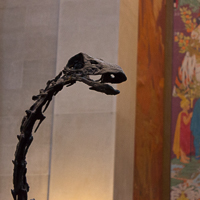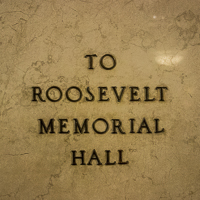
About the Collection
Most presidents have memorials, whether large are small, dedicated to them. Nationally, Theodore Roosevelt is enshired on Mount Rushmore and on an island in the middle of the Potomac in Washington DC. But Roosevelt was also key to the history of New York City--where he was born and served as Police Commissioner, as well as to New York State, where he served as Governor. The American Museum of Natural History contains the state's official memorial to one of her favorite sons, and a more appropriate memorialization of a man is difficult to find.

What You Will See
T.R. was a pioneer in the modern conservation movement. While some of his ideas (and actions) do not fit well with current conservation science, during his own time--when museums were felling Giant Sequoias and there was serious talk of putting a dam in the Grand Canyon--he was a visionary. Read his words while standing in line for tickets. Spend a few moments in the memorial hall revisiting his fascinating and energetic life. Most of all, learn about the imporatnce of natural conservation throughout the museum.

Why You Should Go
The American Museum of Natural History dates to a time when science and conservation were very different than they are now. While the museum continues to modernize and is at the cutting edge is some scientific fields, some of what is preserved in the older halls is 19th- and 20th-century attitudes towards conservation. Contrast the Hall of Biodiversity with the Hall of New York State Environment to see the progress made in the last several decades in understanding the impact on nature of human activity. Teddy Roosevelt helped start the progress that continues today and a museum that spans decades of attitudes is well symbolized by the man who brought America into the new century.




